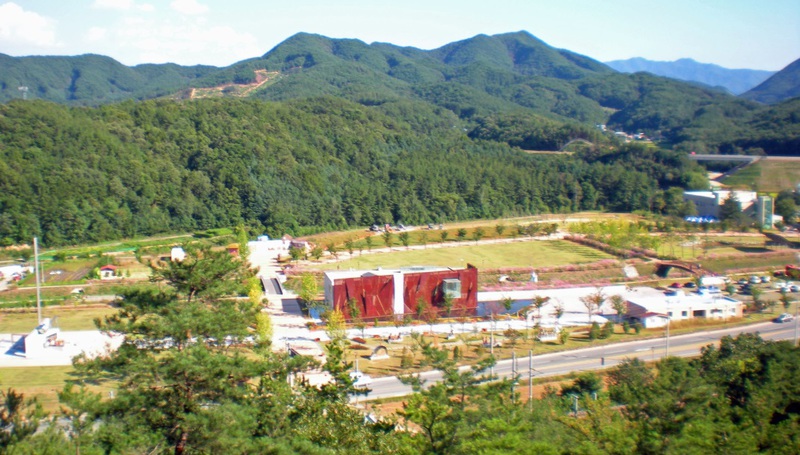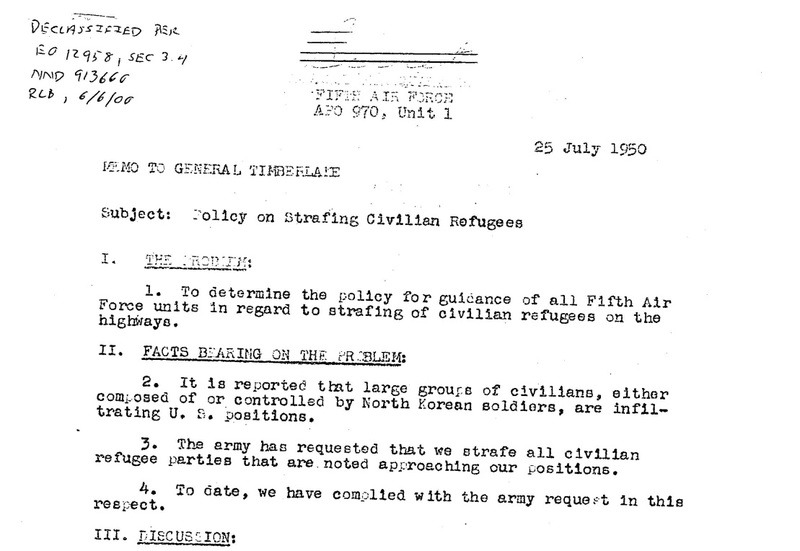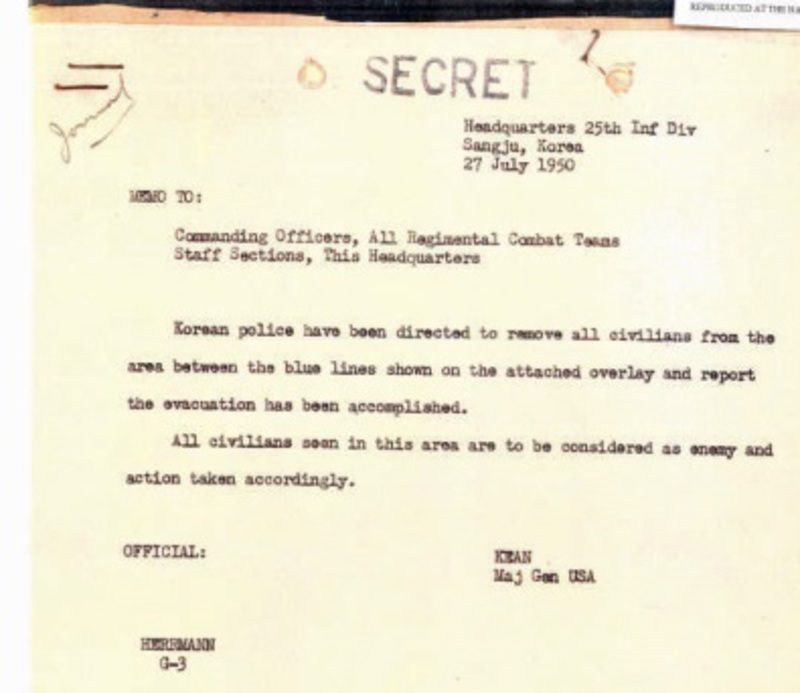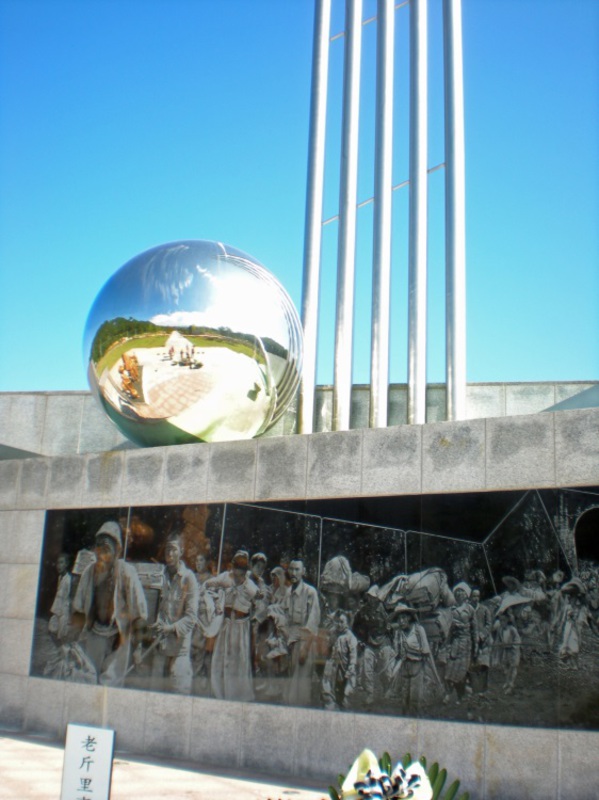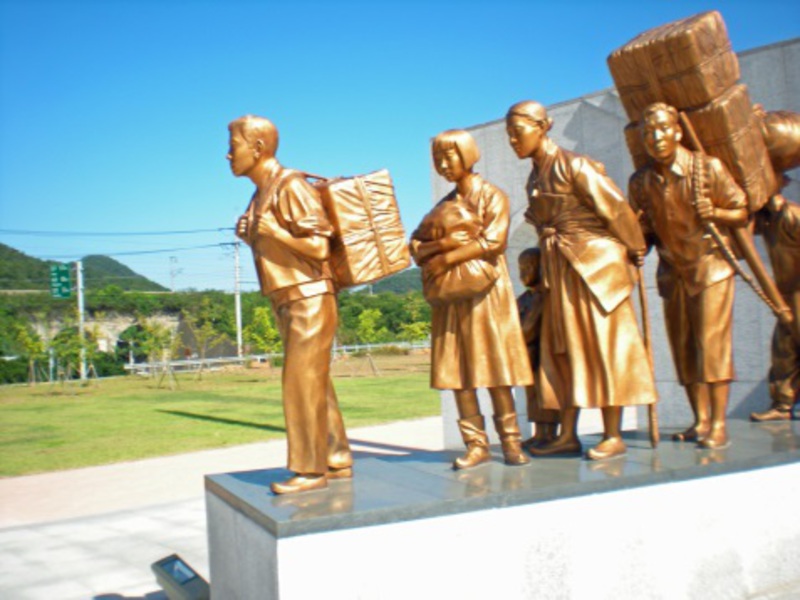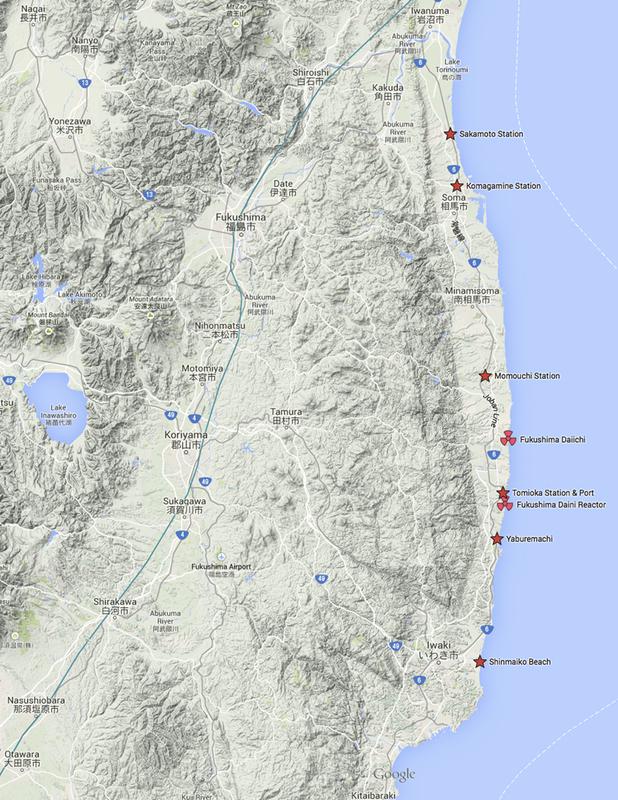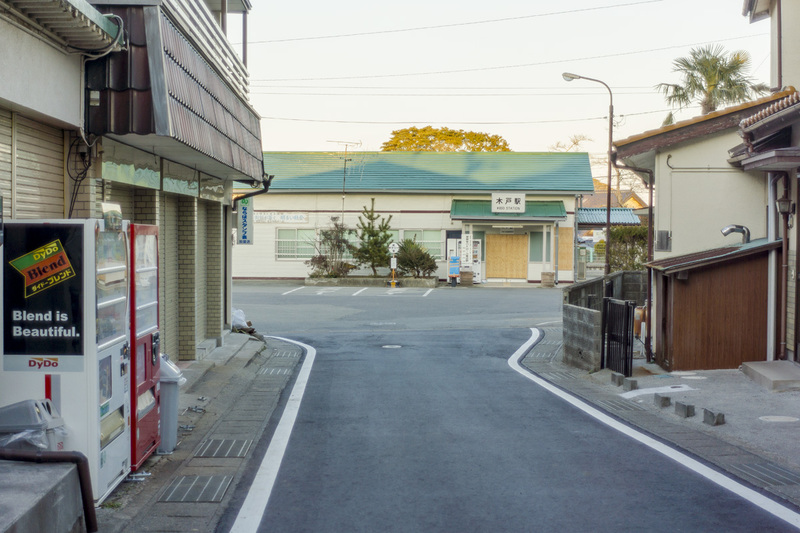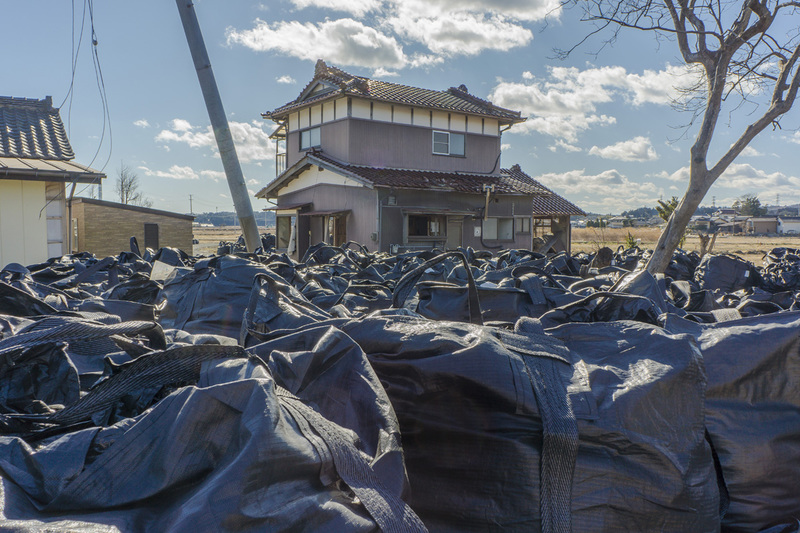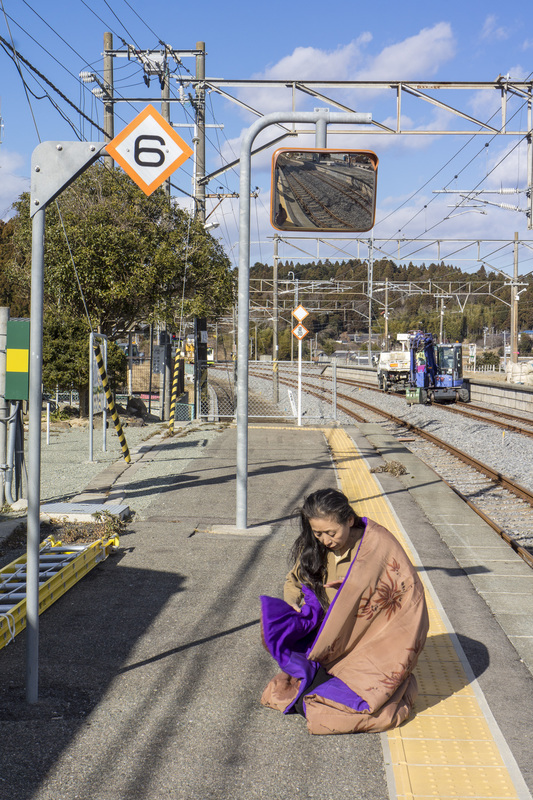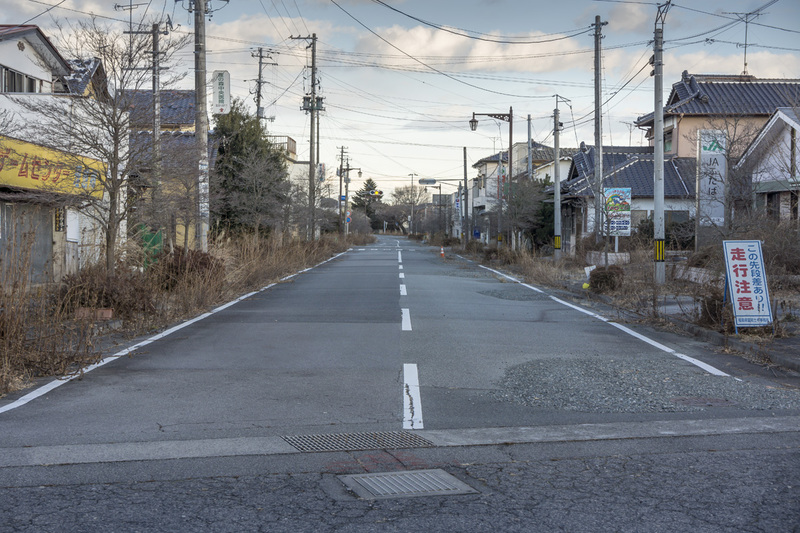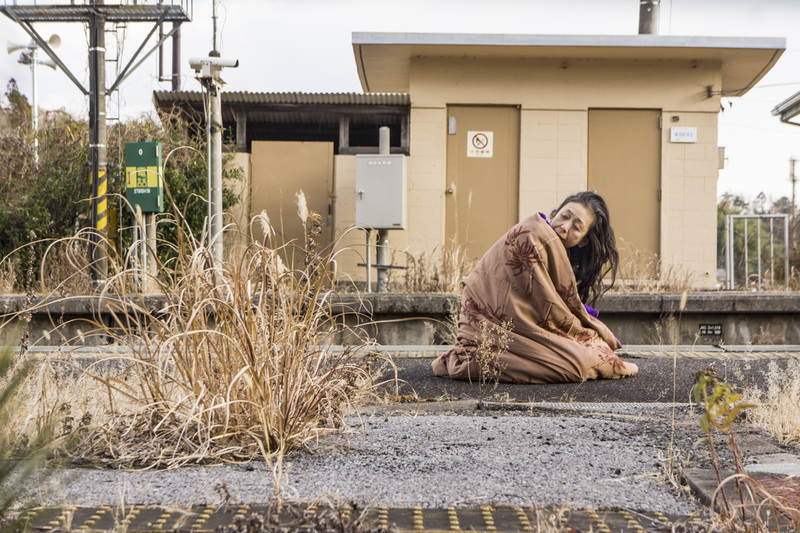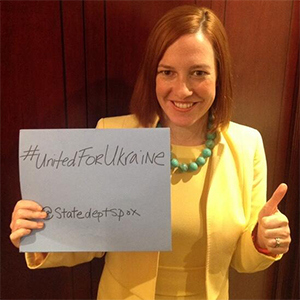State Crimes Against Democracy and Canada’s 2011 General Election
March 13th, 2015 by Prof Michael Keefer
[W]e have had the possibility of living in democracies. What does it mean? It means places where the privileged are not the ones to make the decisions, but that the underprivileged are going to rise to a status where they are normal human beings and human citizens with their freedoms and their rights. When that is no longer the case, whatever the circumstance […,] then it is proper for the young generation to listen to the very old ones who tell them, “We have been resisters at a time where there was fascism or Stalinism. You must find the things that you will not accept, that will outrage you. And these things, you must be able to fight against nonviolently, peacefully, but determinedly.” – Stéphane Hessel1
1. Democracy: a “possibility” we have enjoyed
In October 2010 Stéphane Hessel, a leading exponent of democratic values throughout a long life that included service in the French resistance to Nazi occupation, participation in the drafting of the United Nations Universal Declaration of Human Rights, and a diplomatic career involving contributions to other important instruments of international law as well, produced an essay—one might say a manifesto—that became an international sensation. Published when Hessel was 93, Indignez-vous! sold 2.5 million copies in France within six months.2 Translated into many languages, the booklet went on to influence the Indignados and Occupy movements in Spain and the United States.
Hessel based his analysis in Indignez-vous! on what he called the foundation of his political life: his wartime experience in the resistance, and the declaration by the National Council of the Resistance on March 15, 1944 that defeating the Nazis and their French collaborators was only a stage on the way to “a true economic and social democracy.”3
The forces Hessel had opposed in his early years included those on the political right in Vichy France and in Occupied France who approved of the social order imposed by their Nazi conquerors; at 93, he thought it shameful that governing elites in France who are effectively the intellectual heirs of that discredited Ordre nouveau should be discarding the inheritance of the resistance. What prompted his manifesto for a new political resistance was the strong contemporary tendency, in France as in the other democracies of the developed world, toward a revocation of the social and civil rights for which the anti-Fascists of his generation had struggled—which has produced the outrageous spectacle of states declaring the impossibility any longer of funding social, educational, and health-care programs that had been created during the post-war period, while at the same time increasing social inequality through regressive taxation policies, lavishing resources on unjust foreign wars, and rewarding the wildly imprudent and often openly dishonest behaviour of financial institutions with gargantuan bailouts.
The processes involved in the revoking of social and civil rights against which Hessel protested have, for the most part, preserved at least a façade of legality.4 But in recent decades there has also been a tendency, most pronounced in the United States, but observable in other countries as well,5 toward interventions in democratic processes (including both elections and what would otherwise be normal patterns of public opinion formation) that are at once both openly illegal, or indeed criminal in nature, and also covert. During the past decade—beginning several years prior to the publication of Stéphane Hessel’s manifesto, this tendency has become an object of formal research and inquiry among an active group of social scientists in the United States, Britain, Australia, and Canada. The term that scholars working in this domain have adopted for the primary objects of their attention is “state crimes against democracy.”
2. Defining “state crimes against democracy”
Interventions of the kind that deserve this label, involving flagrant and often violent subversions of legality, are typically aimed at reorienting both public opinion and the structures of power within the state. But they are covert, in that the organizations involved—whether these be the more or less unaccountable security and policing agencies that make up a large part of what some analysts refer to as “deep politics,”6 or elite groups within political parties, or some alliance of the two, possibly involving powerful corporate interests as well—make strenuous efforts to conceal their own involvement and to offer to the public deceptive alternative accounts of events for which they are responsible. This deception, obviously enough, is a crucial aspect of the event, the intended impact of which depends upon the public either accepting a false causal explanation, or else understanding something that was in fact carefully planned and executed as a more or less random effect of the actions of isolated, irrational, and hence unpredictable agents.
State crimes against democracy arguably emerge from overlapping contradictions within democratic states. Our economic and political system, as currently constituted, generates increasingly large differences in wealth and power between socio-economic elites and ordinary citizens—and corresponding differences, in many cases, between the priorities and interests of political elites and the vast majority of the population—while yet retaining many elements of the formal structures and the ideology of egalitarian democracy. There is likewise a contradiction within western democracies over the existence within the state security apparatus of agencies and structures that are only to a limited degree, if at all, subject to democratic control.7
During periods of intense power-bloc rivalry such as that which followed World War II, an argument can of course be made for the existence of security and intelligence agencies whose job it is to detect and prevent the penetration of state and civil society organizations by the agencies of foreign powers that intend in one way or another to fracture and weaken the nation and the state. But officials in such agencies, whose perceptions and political biases may be shared by powerful corporate interests, and by factions within the upper ranks of the military (in short, by what U.S. President Dwight Eisenhower famously warned against in 1961 as “the military-industrial complex”),8 may be tempted to act domestically in an illegal and criminal manner when they are unable to secure approval from the governing authorities for their own perhaps extremist policies. Leading figures of political parties—especially those parties whose policies can most easily be recognized as benefitting elites, but not the great majority of ordinary citizens—may succumb to the same temptation.
Although there can be disagreement as to whether this or that particular event in the United States deserves to be categorized as a state crime against democracy, there is no doubt at all that such events, perpetrated by political or state insiders, have occurred. Paradoxically, though, during a period in which events of this type have arguably been increasing in frequency and significance, it has become increasingly difficult to speak of them. Criminal actions organized by drug cartels and terrorist networks are freely discussed, but critical analyses of crimes committed by political elites—even decades ago—are likely to prompt angry and contemptuous dismissals.
Professor Lance deHaven-Smith of Florida State University first expounded the concept of state crimes against democracy in a peer-reviewed essay published in 2006 in the journalAdministrative Theory & Praxis.9 The concept has since been further refined, extended, and applied in new contexts in some thirty peer-reviewed essays by American, British, Australian, and Canadian scholars—some of them published in special issues of the journals American Behavioral Scientist10 and Public Integrity,11 others in several journals in the fields of politics and public administration12 or in edited books devoted to this and related subjects.13 The concept has also been deployed in interesting ways by scholars of the stature of David Ray Griffin and Peter Dale Scott.14 But for the sake of simplicity, I will rely here on deHaven-Smith’s elaboration of the concept in his 2013 book Conspiracy Theory in America.15
In this book deHaven-Smith gives an illuminating historical dimension to the paradox remarked on above. He notes that although the notion that political elites can be expected to conspire for their own benefit against the common good formed a central part of the political theory and nation-building practice of the founders of the American republic, during the past four decades claims that such behaviour actually occurs in the present day have become virtually taboo.
As he observes, the Declaration of Independence outlined a “history of repeated injuries and usurpations” on the part of King George III, but stated clearly that the colonists’ right and duty to throw off his government and establish a better one was based, not on these abuses in themselves, but rather on the conspiracy of which they were evidence: the king’s plot to establish “an absolute tyranny over these states,” his “design to reduce them under absolute despotism.”16 In shaping the institutions of the new republic, the founders articulated a doctrine of separation of powers among the executive, legislative, and judicial functions of the state that was premised upon their conviction that “representative democracy was vulnerable to, in their language, ‘conspiracies against the people’s liberties’ by ‘perfidious public officials,’ and to ‘tyrannical designs’ by ‘oppressive factions.’”17 But now, in contrast, anyone who is willing to suspect such behaviour on the part of political elites (as opposed, let’s say, to conspiratorial behaviour by mafiosi or by Islamist terrorists) can expect to be labelled a “conspiracy theorist”—a pejorative term that implies both a lapse into paranoia and a departure from evidence-based rationality.
DeHaven-Smith insists, with reference both to the present day and to the writings of the founders of the United States, that the logic of “conspiratorial suspicion, which reconstructs hidden motives from confluent consequences in scattered actions, [….] is not paranoid; it is a laudable effort to make sense of political developments in a degenerating constitutional order.”18 What is irrational, rather, is the now-current dismissal, on a priori grounds, of the possibility of elite behaviour of the kind that the founders of the American republic attributed to the government of George III, and thought it prudent to anticipate in their own. This dismissal drives political thought into the impoverished domain of what deHaven-Smith calls “coincidence theories,”19 and encourages an abandonment of the structural and contextual analyses normally practised throughout the human sciences, as well as of the kinds of forensic analysis that are automatically applied in other kinds of criminal investigation.
DeHaven-Smith explains that he deliberately intends the concept of state crime against democracy, or SCAD,
“to displace the term ‘conspiracy theory.’ I say displace rather than replace because SCAD is not another name for conspiracy theory; it is a name for the type of wrong-doing about which the conspiracy-theory label discourages us from speaking.”20
That label, he says,
“is a verbal defense mechanism used by political elites to suppress mass suspicions that inevitably arise when shocking political crimes benefit top leaders or play into their agendas, especially when these same officials are in control of agencies responsible for preventing the events in question or for investigating them after they have occurred.”21
In contrast to this defensive labelling, “the SCAD construct does not refer to a type of allegation or suspicion”:
“It refers to a special type of transgression: an attack from within on the political system’s organizing principles. For these extremely grave crimes, America’s Founders used the term ‘high crime’ and included in this category treason and ‘conspiracies against the people’s liberties.’ SCADs, high crimes, and antidemocratic conspiracies can also be called ‘elite political crimes’ and ‘elite political criminality.’”22
These crimes differ from more routine forms of political criminality, such as bribery, kickbacks, or bid-rigging, which tend to affect “only pockets of government activity.” Unlike those more commonplace crimes, state crimes against democracy “have the potential to subvert political institutions and entire governments or branches of government. Committed at the highest levels of public office, they are crimes that threaten democracy itself.”23
3. State crimes against democracy in U.S. presidential elections
The most significant events of the past half-century that invite characterization as state crimes against democracy include the Kennedy assassinations in 1963 and 1968 (to which might be added the assassination of Martin Luther King).24 They include Richard Nixon’s secret intervention during the election of 1968 in the negotiations aimed at ending the Vietnam War (which was arguably treasonous, since Nixon, while running for the presidency, was advising the government of South Vietnam to act against the behests of the U.S. government);25 and also the crimes that are remembered together under the name of Watergate.26 They include the 1980 “October Surprise,” in which treasonous contacts with a foreign power (Iran, this time) were again used to influence the outcome of a presidential election; and the linked Iran-Contra scandal.27 They arguably include the 1995 bombing of the Murrah Federal Building in Oklahoma City, which according to the analysis of a retired U.S. general involved, in addition to Timothy McVeigh’s truck bomb, demolition charges of which McVeigh and his accomplices had no knowledge.28 They include the massive levels of vote suppression and fraud in the presidential elections of 2000 and 2004, which were not merely “flawed,” as all commentators acknowledge, but stolen.29 And finally, they include the linked events of the terrorist attacks of September 11, 200130 and their sequel in the ensuing anthrax attacks, which have been revealed as coming from within the state’s own military-scientific apparatus.31
We can observe three things about this admittedly selective list of events. First, to the degree that they are correctly identified as state crimes against democracy, these actions were carried out or enabled by state insiders.
Secondly, these events have been accompanied and followed, during the past dozen or more years especially, by an accelerating movement domestically away from the rule of law,32 and by a concurrent engagement on the part of the United States and its satellites in a series of foreign wars and interventions undertaken in open defiance of international law.33
And thirdly, most relevant to my purpose here, all but two of these actual or putative state crimes against democracy amounted to direct interventions in presidential election campaigns. (The two exceptions, the Oklahoma City bombing and the 9/11 attacks and subsequent anthrax attacks, were traumatic events that achieved large-scale reorientations of public opinion.)34
The George W. Bush administration came to office through an election marked by unprecedented levels of Republican-Party-organized vote suppression and fraudulent miscounting of the ballots cast, and culminating in an intervention by the Republican-majority U.S. Supreme Court that put an end to a recount of votes in Florida which, had it been allowed to proceed, would have resulted in the Democratic candidate, Al Gore, being elected as President.35
The 2004 presidential election repeated, in more grotesque form, all the forms of vote suppression and electoral fraud that had characterized the previous one. As Lance deHaven-Smith has remarked,
“The election breakdowns [in 2000 and 2004] are not widely suspected of being repeat offences by the same network of political operatives employing the same tactics and resources, even though both elections were plagued by very similar problems, including inadequately equipped and staffed polling places in heavily Democratic areas, computer anomalies in the tabulation of county and state totals, highly partisan Republicans in charge of election administration, aggregate vote tabulations benefiting George W. Bush, and exit polls indicating that the other candidate had won rather than Bush.”36
But these facts tell us that there are indeed important forensic parallels between the two elections.
The 2004 exit poll data revealed the scale of the fraud required to give George W. Bush his second presidential term. One can calculate from this data that John Kerry, the Democratic candidate, received—or should have received—64 million votes, and Bush just 56.5 million.37 But the official results gave Bush the victory with 62 million votes over Kerry’s 59 million. Bush thus received 5.5 million more votes than he would have from an honest count, and Kerry 5 million too few.
One striking feature of this election was a systematic after-the-fact falsification of the exit poll data. On November 2, 2001, election day, the national exit poll with 13,047 respondents showed Kerry beating Bush by nearly 3 percent. New figures posted shortly after 1:30 in the morning of November 3, based on 13,531 respondents, showed Bush ahead by nearly 1.5 percent: an increase of 3.6 percent in the number of respondents had produced a mathematically impossible swing of 4.5 percent from Kerry to Bush in voters’ reports of their choices.
Similar mathematically impossible swings resulted from alterations made overnight in the state exit poll data for the key swing states of Florida and Ohio. The November 2 data showed Kerry holding a marginal lead over Bush in Florida, but an overnight increase of 0.55 percent in the number of respondents produced a 4 percent swing to Bush. In Ohio, the state that decided the national election, the November 2 data showed Kerry beating Bush by a decisive 4 percent—but an overnight increase of 2.8 percent in the number of respondents produced a swing from Kerry to Bush of fully 6.5 percent.
My own first article on the 2004 election, “Footprints of Electoral Fraud,” which drew attention to these anomalies, was published two days later, on November 5th.38 The metaphor of that title may be a useful one—for it is in fact not easy to commit electoral fraud on a large scale without leaving tracks that forensic analysis can detect.39
In an article entitled “The Strange Death of American Democracy: Endgame in Ohio,” published in late January 2005, I summarized at length the large body of evidence then available which showed that—even setting aside the massive vote-suppression fraud carried out on his behalf—George W. Bush did not come close to winning the state of Ohio; and that, since under the Electoral College system Ohio was the crucial swing state, he therefore did not win the presidency either.40 This and further evidence has since been more fully analyzed in a series of important books—none of which, interestingly, has received more than passing mention, if that, in the mainstream media.41
6. Home truths
Some sixty years ago the distinguished Canadian economic historian Harold Innis wrote of what he called “the Siamese twin relationship between Canada and the United States—a very small twin and a very large one, to be exact.”42 One might suspect that some of what I have written here could be coloured by this relationship—by the small twin’s resentment, envy, or perhaps fear of his larger sibling.
It seems only right, then, that having endorsed some trenchant criticisms of the recent behaviour of American elites—having, so to speak, slung pebbles against the windows of my neighbour—I should conclude by slinging some against my own windows as well, and by acknowledging that Canada’s recent national elections have been less clean than we might hope and believe.
Our present government, under Prime Minister Stephen Harper and his Conservative Party, came to power in 2006 in an election marked by two important anomalies. One of these, an illegal shifting of campaign funds between the Conservative central office and local riding associations, made it possible for the Conservatives to spend $1.3 million more on campaign advertising than they were allowed to by law, and may have tipped a close election in their favour.43 The other more serious anomaly was an announcement by the RCMP, our national police force, midway through the election campaign, that it was investigating one of the government’s key figures, Finance Minister Ralph Goodale, for corruption. The Liberal government, for which opinion polls had confidently been predicting another term in office, plunged in popular esteem—“an 18-point lead in Ontario for the Liberals transmute[d] into a six-point lead for the Conservatives within a few days”44—and Stephen Harper’s Conservatives won enough seats in Parliament to form a minority government. The Conservatives had been in office for more than a year when the RCMP acknowledged that, after all, it had no evidence against Goodale.
Can we describe these events as state crimes against democracy? There is no doubt as to the illegality of the first and the radical impropriety of the second—and they did result in a change of government that brought about radical reorientations of Canadian domestic and foreign policies. Is it significant that neither event received adequate investigation? The financial fraud was settled out of court five years after the event, with the Conservative Party paying a derisory $50,000 fine;45 and a government which had come to office through the RCMP’s impropriety was no more disposed to undertake a serious inquiry into that episode than was the RCMP itself.46
Our next national election, in 2008, was marked by piecemeal instances of law-breaking by members of the governing party—one of which is of particular, almost prophetic interest.
Canada has a multi-party system with three main national parties: from right to left, the Conservatives, the Liberals, and the New Democratic Party (or NDP)—as well as two smaller centre-left parties, the Green Party and the Bloc Québécois (which fields candidates only in Québec). In 2008 Gary Lunn, the Environment Minister, was in danger of losing his British Columbia seat when the NDP candidate was forced by an old scandal to withdraw near the end of the campaign—a development that gave Lunn’s Liberal opponent a good prospect of winning most of the centre-left vote.47 But taking advantage of the fact that the NDP candidate’s name remained on the ballots, supporters of Lunn’s campaign flooded the riding on the day before the election with fraudulent automated phone calls, supposedly from the NDP’s local headquarters, urging people to vote for their man. Shortly before the election, a poll showed that less than one percent of the electorate still intended to cast a vote for the NDP—but as a result of the robocall fraud, 5.69 percent voted NDP: Lunn was re-elected, it seems, because more than 4.7 percent of the riding’s voters had been persuaded to throw their votes away.48 Despite opposition complaints, both the RCMP and Elections Canada, the organization that runs national elections and is charged with enforcing the Elections Act, declared (falsely) that no law had been broken.49
Emboldened by this success, people working in the interests of the Conservative Party appear to have decided to repeat the operation on a national scale in the 2011 election.
Midway through that election campaign, which ran from March 26 until May 2, 2011, Liberal Party supporters across Canada began to receive late-night or otherwise inconvenient phone calls—supposedly from their own party—asking for their support. These harassment calls seemed designed to alienate voters from that party, and according to some news reports succeeded in doing so.50 Then, in the final days of the campaign, many opposition-party supporters received fraudulent calls giving them false information as to where they were supposed to vote. The clear intention of these calls, which claimed to be providing correct revised information, was to send the recipients to more distant places where they would be unable to vote, and thus to reduce the turnout of voters who supported centre-left parties.51
We have good estimates, based on polling data and on Elections Canada complaints records, of the numbers of these calls. Harassment calls were made to well over half a million Canadian voters, and vote-suppression calls were received by a nearly equal number of people52—though the total number of recipients was significantly smaller than the total number of calls, since many opposition voters received both kinds of calls. Surprisingly, perhaps, since they made up less than half of the total calls, the vote-suppression calls received nearly all of the media and investigative attention given to this issue.
One obvious feature of this telephone fraud is that it was nationally organized. The same scripts appear to have been used nation-wide in the vote-suppression calls, and Elections Canada recorded complaints about fraudulent calls from 261 of Canada’s 308 ridings or electoral districts—though the calls were concentrated in some thirty ridings, and quite thinly scattered elsewhere. Clear evidence that the two kinds of fraudulent calls were directed by a common intentionality, and also that they were to a considerable degree targeted, appears in the fact that 42 percent of the people whose complaints were recorded by Elections Canada reported having received both harassment and vote-suppression calls.53
We know quite a lot about the provenance of these calls. While most of the vote-suppression calls were automated “robocalls,” the first wave of them was made by live-operator call centres which were also employed by the Conservative Party to make legitimate ‘get-out-the-vote’ calls: in the fraudulent calls, the operators routinely gave out call-back numbers that led to Conservative Party lines.54 Investigative reporting by CBC News,55 together with a poll conducted by Ekos Research,56 raised the probability that the Conservative Party’s central database had been used nation-wide in the targeting of vote-suppression calls.57 And in the riding of Guelph, the only one in which Elections Canada conducted anything resembling a serious investigation, several important facts were established:
(1) The call list used in sending out the main wave of vote-suppression robocalls was, very precisely, the most recent update of the Conservative Party’s data-base list of opposition-party supporters in that riding;58
(2) The computers used in arranging for those calls to be sent out were located in the Conservative Party’s Guelph campaign office;59 and
(3) The person principally responsible for the fraud in Guelph, who concealed his identity under a pseudonym, used the same two Internet Protocol addresses—sometimes in the same log-in sessions—as did Andrew Prescott, the Deputy Manager of the Conservative campaign in Guelph.60
The fraud had somewhat paradoxical consequences. In the riding of Guelph, where it was most intense, it was a conspicuous failure, and the Liberal incumbent was re-elected. But this is a university community with a high level of political engagement, with very active Liberal, NDP, and Green Party organizations, and, by the end of the 2011 election campaign, with a hot charge of resentment over other vote-suppression activities by the local Conservatives.61
Elsewhere, there is evidence to indicate that the harassment and vote-suppression calls may have tipped the balance in enough ridings to make the difference between a minority Conservative government—in which opposition parties could exercise a considerable degree of power in the House of Commons—and a majority government, in which the Prime Minister’s legislative and executive powers are unconstrained.62
I have quoted above Professor deHaven-Smith’s observation that the elite groups responsible for state crimes against democracy are sometimes also “in control of agencies responsible for preventing the events in question or for investigating them after they have occurred.” This may have been the case in the wake of Canada’s 2011 election.
In February 2012, the Conservative Party fingered one of its own junior officials, Michael Sona, who at the age of 22 had been Communications Director in the Guelph campaign, as the sole organizer in Canada of the telephone fraud. Elections Canada went along with this improbable notion, and laid charges against Sona, although the principal evidence against him consisted of conversations conveniently ‘remembered’ by other junior officials at the instigation of the Conservative Party’s chief lawyer. No charges were laid against anyone else. Although Elections Canada had much more substantive evidence against Andrew Prescott, who had been Deputy Manager of the Conservative campaign in Guelph, and the person in charge of information technology, it granted him immunity from prosecution, and Sona, who had been “thrown under the bus” by the Conservative Party, was duly convicted in August 2014, after a trial which had elements of farce, given that the prosecutor and the judge concurred in describing Prescott, the principal prosecution witness, as an untrustworthy confabulator.63
Elections Canada’s investigation of the fraud was marked by a surprising degree of incompetence. Early evidence of this appeared in May 2012, when Chief Electoral Officer Marc Mayrand informed a parliamentary committee that Elections Canada had received 70 complaints from the riding of Guelph about fraudulent phone calls: the actual number of specific and documented complaints from Guelph received by this time by the responsible official, the Commissioner of Canada Elections, was in fact well over 200. This pattern was repeated in a report Mayrand issued on March 26, 2013, according to which Elections Canada had by this time received “just over 1,400” complaints. But figures provided in April 2014 by the Commissioner of Canada Elections reveal that the actual number of complaints received by that time was at least 50 percent higher.64
But the incompetence was much more far-reaching than this. Except in the riding of Guelph, no attempt appears to have been made to obtain court orders for telecommunications company records until well over six months or even a year after the election (by which time most companies had discarded the relevant information). In Guelph itself, the investigation conducted by retired RCMP officer Allan Mathews was woefully inadequate. His more salient errors can be briefly itemized.
(1) Mathews had information that Elections Canada’s office in Guelph was “inundated” with complaints from the moment its telephone lines opened at 8:50 a.m. on election day, and that people deceived by fraudulent calls started showing up at a central Guelph polling station as soon as it opened at 9:30 a.m.65And yet the only fraud he investigated was a single burst of nearly 7,700 robocalls sent to a list of just over 6,700 Guelph voters by an Edmonton voice broadcasting company under contract to the Conservative Party between 10:03 and 10:14 a.m. on election day.
- Mathews made contact with only 18 of the people in Guelph who made a total of 379 complaints recorded by Elections Canada. He got in touch with just five of the 79 complainants on a list provided to him by the Liberal incumbent in Guelph on May 31, 2011: the fact that two of those five informed him of fraudulent calls quite unlike the robocalls he investigated (including late-afternoon calls in which voters were falsely informed that their polling station had closed early) might, one think, have encouraged him to go further. He did not contact any of the complainants on a second list provided to him by the Liberal Party, or follow up information about complaint lists sent to him by the Guelph NDP and Green Party.
(3) Mathews appears to have made no attempt to investigate live-operator fraudulent calls in Guelph, and the court order he obtained for information from the Edmonton voice broadcaster was for records pertaining only to a single day, May 2, 2011—even though he had information about fraudulent calls made before that day. When the Edmonton company provided him with a recording of a harassment call downloaded by the Guelph Conservatives that was to have been sent out with a “spoofed” Liberal Party originating number, he professed not to understand what it was.66
(4) Mathews appears also not to have understood that the communications company Rogers recycles the modems it provides to customers. He traced the modem that had been used in arranging fraudulent robocalls to an address none of whose residents had any political interests or contacts—and apparently failed to realize that the same modem had been used during the 2011 election at the Conservative Party headquarters in Guelph. As a result, what the media should have reported as a breakthrough in the case—a discovery that the robocall fraud in Guelph was organized from the Conservative Party’s campaign office—was reported instead as a “blank wall.”67
(5) Finally, Mathews obtained material evidence from the Edmonton voice broadcaster, in the form of detailed information about session logs, which showed that Andrew Prescott, the Deputy Manager of the Guelph Conservative campaign, and the person who organized the robocalls Mathews investigated were either one and same person, or else very closely acquainted. Prescott and the so-called “Pierre Jones” (also known as “Pierre Poutine”) used the same two Internet Protocol (IP) addresses; “Pierre Jones” logged in to two of Prescott’s voice-broadcaster sessions; Prescott stored three sessions under the name of “Pierre Jones”; and on two occasions on election day “Jones” and Prescott logged in within minutes of each other from the same IP address.68 In an uncorrupted investigation, this information would have justified the laying of charges against Prescott—instead of which, he was granted immunity from prosecution.69
One last frustrating detail can be mentioned. In late February 2012 Annette Desgagné, a telephone operator who had been employed at the Thunder Bay, Ontario call centre of Responsive Marketing Group (RMG), a company contracted to the Conservative Party, made national headlines when she claimed that she believed her work during the 2011 election campaign had included giving voters misleading information about their polling stations. She and some co-workers who had likewise experienced reactions of incredulity verging on anger from citizens who recognized the information RMG was providing as obviously incorrect spoke to their supervisor. When she told them to continue making the calls, they contacted the RCMP and Elections Canada—neither of which took any action.70
This story made headlines in late February 2012, ten months after the election—and was quickly followed by reports in CBC News and the Toronto Star that the Conservative Party had dispatched senior officials to Thunder Bay to go through all of the audio recordings held by Responsive Marketing Group.71 It is hard to imagine any innocent explanation for such an act.72 Elections Canada announced that it was sending one of its investigators to Thunder Bay, where he would arrive a week later.73 By that time, one must assume, any incriminating details in those records would have been purged.
In April 2014, Yves Côté, the Commissioner of Canada Elections (which is to say the official in Elections Canada responsible for enforcing the Canada Elections Act), brought his national investigation to a close with a report declaring that while some confusing telephone calls had indeed been made across Canada, “the evidence does not establish that calls were made a) with the intention of preventing or attempting to prevent an elector from voting, or b) for the purpose of inducing an elector by some pretence or contrivance to vote or not vote [….] As a result, the Commissioner found insufficient grounds to recommend that any charges be laid.” This report added that “It is useful to note, moreover, that the data gathered in the investigation does not lend support to the existence of a conspiracy or conspiracies to interfere with the voting process […].”74
Right-wing journalists were quick to take the hint. “Sorry, Truthers,” John Ivison trumpeted in the National Post, “the robocalls affair is not Canada’s Watergate.” Quoting Christopher Hitchens’ comparison of conspiracy theories to “the exhaust fumes of democracy,” Ivison hoped for a reduction in “similar emissions.”75 Tasha Kheiriddin declared in the online news site iPolitics that the “conspiracy theory” around robocalls had indeed imploded—gone “poof,” she said—and proposed that the affair “may yet be filed under ‘History’s Greatest Hysterias’, next to the Tanganyika Laughter Epidemic of 1962 and the Dancing Plague of Strasbourg in 1518.”76
I hope we know, by now, what to think of the ad hominem vapourings of journalists who are attempting to enforce a rule of silence around state crimes against democracy. The appropriate response is simply to continue a rigorous critical analysis of the matters from which they would like us to avert our eyes.
Michael Keefer, who holds degrees from the Royal Military College of Canada, the University of Toronto, and Sussex University, is Professor Emeritus in the School of English and Theatre Studies of the University of Guelph, and a former President of the Association of Canadian College and University Teachers of English. He has held visiting research fellowships at the University of Sussex and at the Ernst-Moritz-Arndt Universität, Greifswald.
Notes
15Lance deHaven-Smith, Conspiracy Theory in America (Austin: University of Texas Press, 2013).
59See R. v. Sona, 2014 ONCJ 365 (CanLII) (14 August 2014), http://canlii.ca/t/g8m0r, para. [5] v).
60R. v. Sona, 2014 ONCJ 365 (CanLII), para. [5] viii).
66See Alan Mathews, ITO filed on 12 December 2011, paras. 117, 124.
68Alan Mathews, ITO filed on 20 March 2012, paras. 167-69, p. 24.
73Payton, “Election call tapes under review by Conservatives.”
76Tasha Kheiriddin, “Robocalls: The conspiracy theory goes poof,” iPolitics (24 April 2014), http://www.ipolitics.ca/2014/



 Image from voicesevas.ru
Image from voicesevas.ru